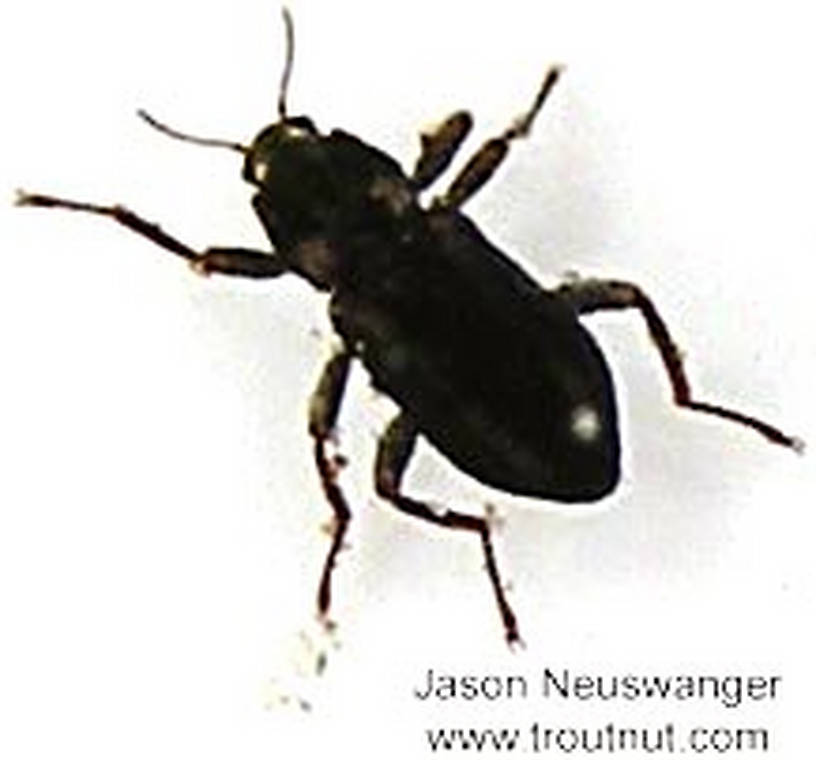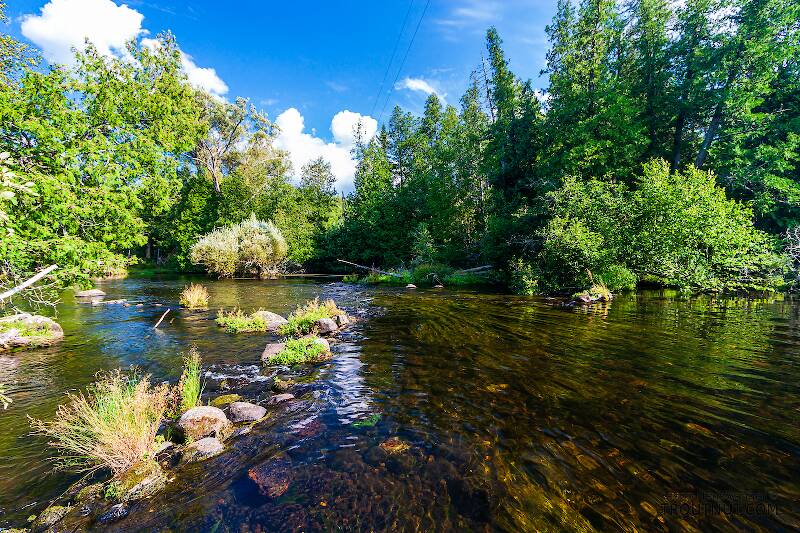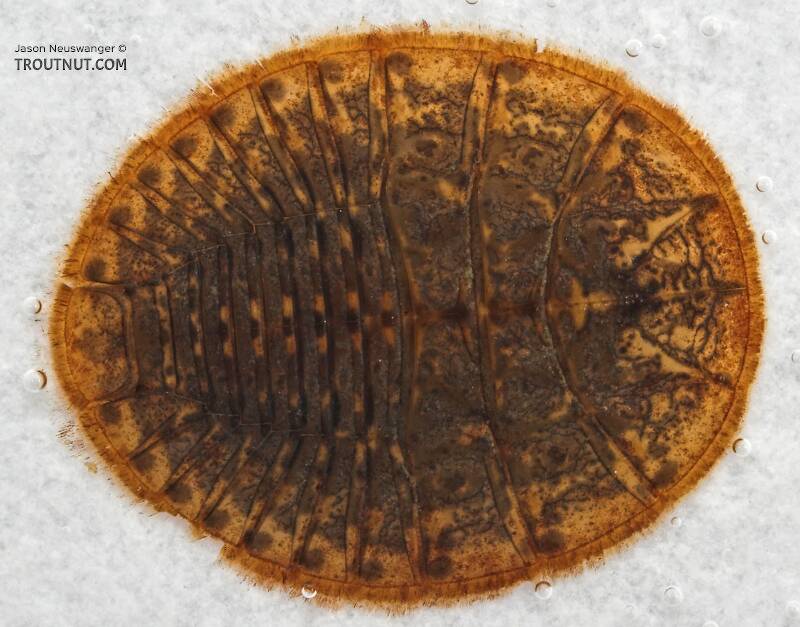
Salmonflies
Pteronarcys californica
The giant Salmonflies of the Western mountains are legendary for their proclivity to elicit consistent dry-fly action and ferocious strikes.
Featured on the forum

Troutnut is a project started in 2003 by salmonid ecologist Jason "Troutnut" Neuswanger to help anglers and
fly tyers unabashedly embrace the entomological side of the sport. Learn more about Troutnut or
support the project for an enhanced experience here.
Beetles
Beetles are the largest order of insects, and their many species come in contact with trout in three ways. The most popular among fly fishers are the species which live on land and occasionally fall or get blown into the water. But some species live their entire lives underwater, and still others live underwater only as larvae with a wide variety of unusual shapes and habits.
This common name refers to only one order. Click its scientific name to learn more.
Insect Order Coleoptera
These are pretty much always called Beetles.
There are about 5,000 species of aquatic beetles, and I won't be including them all on this site. I've also only included certain aquatic beetles and terrestrial families which I've found frequently on trout streams.
The common terrestrial forms are especially important during the late summer when they get knocked into the stream in any number of ways. As far as I know there are no specific life cycle habits which toss these insects into the water in great numbers; they just become important because there are so many of them around incidentally.
Trout generally relish beetles and their imitations make great searching patterns.
The common terrestrial forms are especially important during the late summer when they get knocked into the stream in any number of ways. As far as I know there are no specific life cycle habits which toss these insects into the water in great numbers; they just become important because there are so many of them around incidentally.
Trout generally relish beetles and their imitations make great searching patterns.

You wouldn't know to look at it, but this is an aquatic beetle and it's in water in the photographs.
See 8 more specimens...



